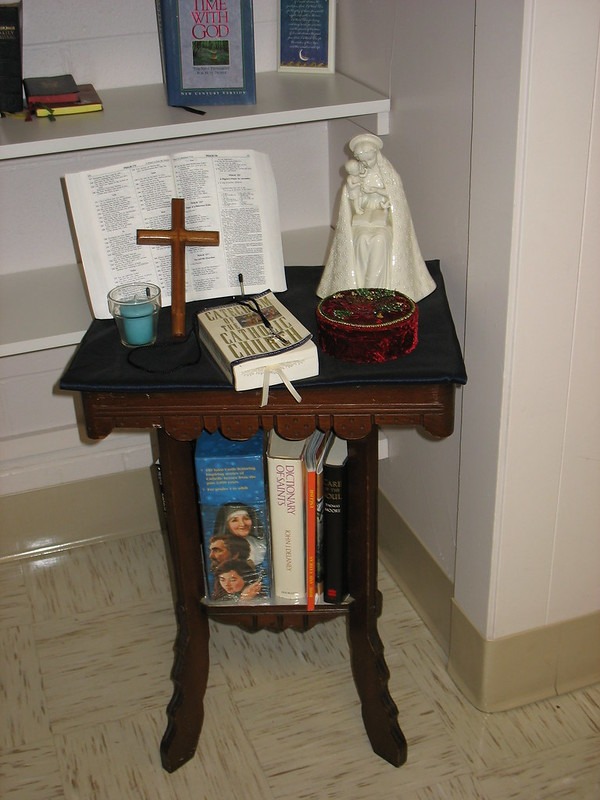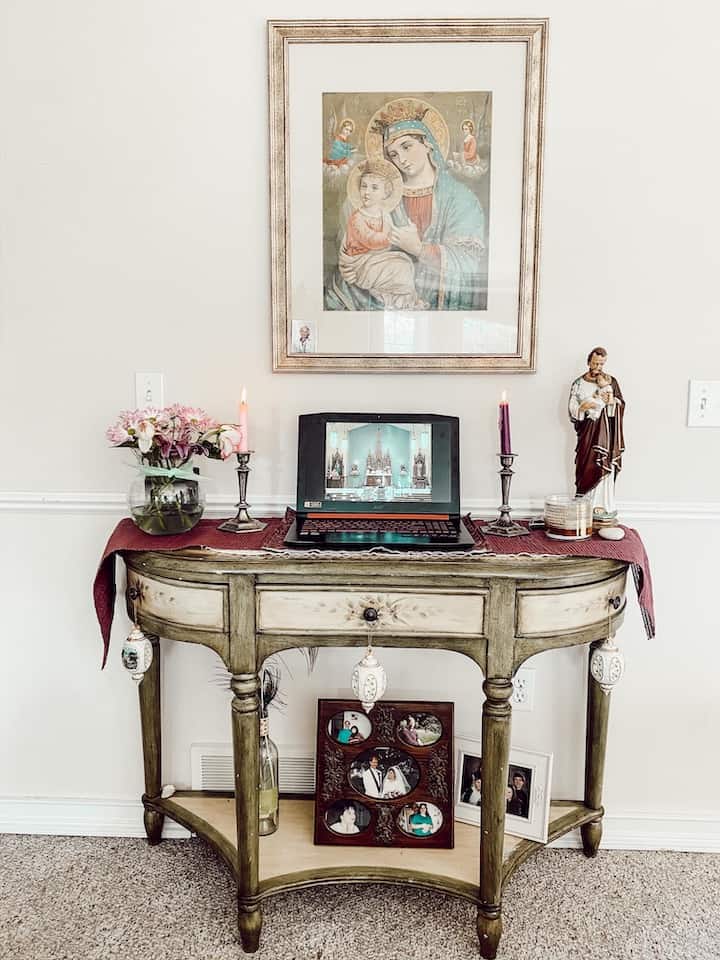Creating a Sacred Haven
A Short but Happy Guide to Creating a Catholic Prayer Space
While the Eucharistic Rosary Congresses generally takes place once a year in October, we still need to pray, daily. In today's fast-paced world, carving out moments for prayer and reflection can be a challenge.

Home Altar
However, for Catholics seeking a deeper connection with God, nurturing your faith through regular prayer, meditation on Our Lord, and contemplation of the Sacred Mysteries is essential. One way to make this spiritual journey more accessible is by creating a dedicated prayer space, altar, or even a chapel in your home. In this article, we will explore the steps to create a personal haven for Catholic prayer, emphasizing the importance of a regular prayer schedule, meditation, contemplation, and the balance between vocal and silent prayer.
A Regular Prayer Schedule
A steadfast commitment to prayer is the foundation of a thriving Catholic prayer life. Whether you're new to faith or a lifelong adherent, establishing a regular prayer schedule can help you stay connected to Our Lord amidst life's chaos. A dedicated prayer space within your home can serve as a tangible reminder of this commitment.

War Room
- Select a suitable location: Begin by choosing a quiet and peaceful location in your home. It could be a spare room, a corner of your bedroom, or even a cozy nook in the living room. Some have even used a closet (as depicted in the powerful faith-based movie, War Room)
- Surround it with tangible reminders of our Faith: We are not iconoclasts; you should surround your prayer space with religious iconography like crucifixes, icons, statues of saints, and candles to create a sacred atmosphere. These visual cues can help you focus during prayer.
- Set a Prayer Schedule: Determine specific times each day for prayer. Consistency is key, whether it's in the morning, before bedtime, or both. Stick to your schedule to develop a habit of prayer. But if you miss your schedule, don’t beat yourself up. Pick yourself up and resolve to do better.
- Don’t worry about how shabby it might look to others: you are not recreating the Sistine Chapel; you’re just creating a place that lessens the distractions and quiets your soul to allow your prayer – your communication with God - to flow naturally and freely. Yes, certainly make it nice, but you don’t need to build a church inside your domestic church (it could just be your favorite chair, and, remember the closet in War Room).
Meditation and Contemplation
Prayer is not just about reciting words; it's also about listening and opening your heart and your soul to God's presence. Incorporating meditation and contemplation into the time you spend in your prayer space will help you deepen your spiritual connection and open up your communion with God.
-

Table Altar
Meditation: Begin your prayer time with meditation. Select a passage from Scripture or writings of the saints that resonates with you. Reflect on its deeper, timeless meaning and how it relates to your life. This practice helps you engage with God's Word on a personal level.
- Contemplation: In addition to meditation, make time for contemplation. This involves simply being in God's presence, quietly listening for His guidance and comfort. It can be as simple as sitting in silence or repeating a sacred word or phrase, such as "Lord, have mercy" or “Lord Jesus Christ, only begotten Son of God, have mercy on me, a sinner.”
Balancing Vocal and Silent Prayer
Catholic prayer encompasses both vocal and silent forms. Employing both approaches can enrich your spiritual journey.
- Vocal Prayer: Include structured prayers like the Rosary, the Our Father, or the Hail Mary in your routine. The Memorare is a powerful prayer of intercession! These prayers are not just words but powerful expressions of faith. They provide a framework and focus for your devotion.
- Silent Prayer: Silent prayer, or mental prayer, allows you to converse intimately with God. It's a time for you to pour out your thoughts, concerns, and gratitude to the Lord. During silent prayer, you can also listen for God's response in the depths of your heart.
Creating a prayer space or home chapel for Catholic prayer is a meaningful endeavor that can transform your spiritual life. By establishing a regular prayer schedule, incorporating meditation and contemplation, and balancing vocal and silent prayer, you can nurture a deep and fulfilling connection with God within the comfort of your own home. Remember, your prayer space is not just a physical location; it's a sanctuary where you can draw closer to the Divine and find solace in your faith journey, growing every closer to Our Lord and Our Lady.

